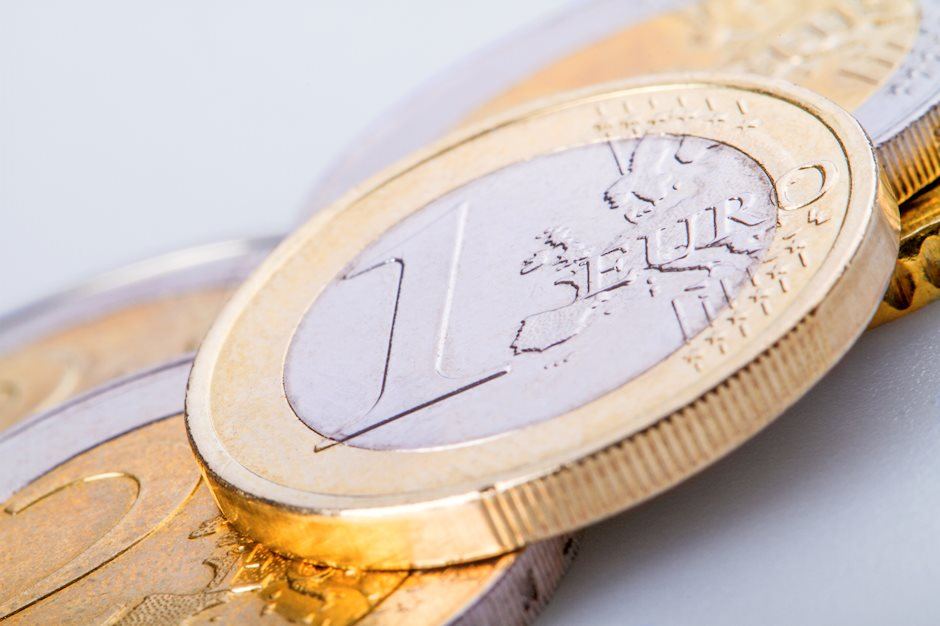Euro picks up pace and flirts with daily tops near 1.0940
- The Euro extends its gains vs. the US Dollar.
- European stocks en route to a mixed close on Monday.
- The FOMC Minutes will be the salient event this week.

The Euro (EUR) maintains the bullish bias unchanged against the US Dollar (USD), prompting EUR/USD to hover around the 1.0940 region, or three-month tops, so far on Monday.
Meanwhile, the Greenback’s performance, as reflected in the USD Index (DXY), remains negative and tests the key 200-day SMA in the 103.60 region during the European morning.
The persistent downtrend in the Dollar comes amidst marginal moves in US yields across the curve, against the backdrop of increasing speculation regarding potential interest rate cuts by the Federal Reserve (Fed) in spring 2024. This speculation has been fueled by weaker-than-anticipated inflation indicators (CPI and PPI) released last week.
In the domestic docket, Producer Prices in Germany contracted 0.1% MoM in October and 11.0% over the last twelve months.
In the US, the only release of note will be the Leading Index tracked by The Conference Board.
Daily digest market movers: Euro remains firm on Dollar-selling
- The EUR looks well bid against the USD on Monday.
- US and German yields advance modestly so far.
- Markets see that the Fed will lower interest rates in the first quarter of 2024.
- Investors expect the ECB to postpone the rate hike.
- Speculation of FX intervention is prevalent in the USD/JPY market.
Technical Analysis: Euro next hurdle of note comes at 1.1000
EUR/USD keeps the optimism well and sound well north of 1.0900 at the beginning of the week.
Immediately to the upside for EUR/USD comes the weekly high of 1.0945 from August 30, ahead of the psychological level of 1.1000. Further north, the pair might come into contact with the August top of 1.1064 (August 10) and another weekly peak of 1.1149 (July 27), all preceding the 2023 high of 1.1275 (July 18).
Occasional bearish moves, on the other side, should meet initial support at the critical 200-day Simple Moving Avergae (SMA) at 1.0805, seconded by the temporary 55-day SMA at 1.0644. South from here emerges the weekly low of 1.0495 (October 13) prior to the 2023 low of 1.0448 (October 3).
Looking at the big picture, the pair's prospects should remain positive as long as it trades above the 200-day SMA.
Euro FAQs
What is the Euro?
The Euro is the currency for the 20 European Union countries that belong to the Eurozone. It is the second most heavily traded currency in the world behind the US Dollar. In 2022, it accounted for 31% of all foreign exchange transactions, with an average daily turnover of over $2.2 trillion a day.
EUR/USD is the most heavily traded currency pair in the world, accounting for an estimated 30% off all transactions, followed by EUR/JPY (4%), EUR/GBP (3%) and EUR/AUD (2%).
What is the ECB and how does it impact the Euro?
The European Central Bank (ECB) in Frankfurt, Germany, is the reserve bank for the Eurozone. The ECB sets interest rates and manages monetary policy.
The ECB’s primary mandate is to maintain price stability, which means either controlling inflation or stimulating growth. Its primary tool is the raising or lowering of interest rates. Relatively high interest rates – or the expectation of higher rates – will usually benefit the Euro and vice versa.
The ECB Governing Council makes monetary policy decisions at meetings held eight times a year. Decisions are made by heads of the Eurozone national banks and six permanent members, including the President of the ECB, Christine Lagarde.
How does inflation data impact the value of the Euro?
Eurozone inflation data, measured by the Harmonized Index of Consumer Prices (HICP), is an important econometric for the Euro. If inflation rises more than expected, especially if above the ECB’s 2% target, it obliges the ECB to raise interest rates to bring it back under control.
Relatively high interest rates compared to its counterparts will usually benefit the Euro, as it makes the region more attractive as a place for global investors to park their money.
How does economic data influence the value of the Euro?
Data releases gauge the health of the economy and can impact on the Euro. Indicators such as GDP, Manufacturing and Services PMIs, employment, and consumer sentiment surveys can all influence the direction of the single currency.
A strong economy is good for the Euro. Not only does it attract more foreign investment but it may encourage the ECB to put up interest rates, which will directly strengthen the Euro. Otherwise, if economic data is weak, the Euro is likely to fall.
Economic data for the four largest economies in the euro area (Germany, France, Italy and Spain) are especially significant, as they account for 75% of the Eurozone’s economy.
How does the Trade Balance impact the Euro?
Another significant data release for the Euro is the Trade Balance. This indicator measures the difference between what a country earns from its exports and what it spends on imports over a given period.
If a country produces highly sought after exports then its currency will gain in value purely from the extra demand created from foreign buyers seeking to purchase these goods. Therefore, a positive net Trade Balance strengthens a currency and vice versa for a negative balance.
Author

Pablo Piovano
FXStreet
Born and bred in Argentina, Pablo has been carrying on with his passion for FX markets and trading since his first college years.

















